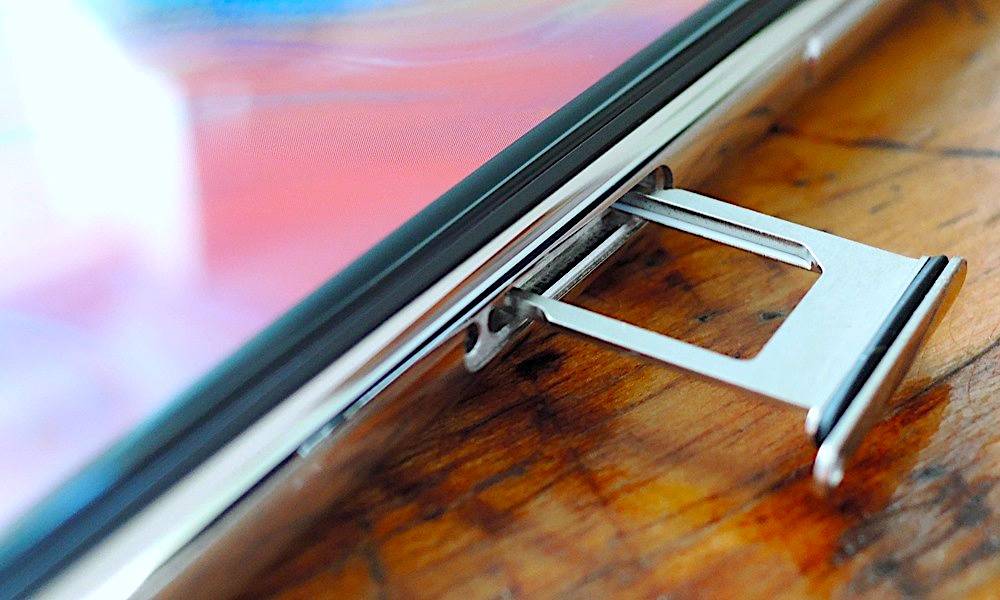Could Apple Ditch the SIM Card Slot on the ‘iPhone 15’?
 Credit: Gadget Hacks
Credit: Gadget HacksToggle Dark Mode
Apple has been marching toward eSIM capabilities for a few years now. Even before it famously added Dual SIM support in the iPhone XS/XR, it had quietly snuck it into the iPad in 2016, and it came to the cellular Apple Watch Series 3 a year later.
So, it’s probably not a big surprise that Apple envisions a future when physical plastic SIM cards will be a thing of the past, and now there’s an unverified report suggesting Apple could be planning to do that as soon as the “iPhone 15” arrives in 2023.
The rumour, which was shared by 9to5Mac, comes from Brazilian site BlogDoiPhone, which claims to have spoken with “internal sources” at Apple. These sources suggest that at least one of the 2023 iPhone models will come with no physical SIM card slot at all, offering up only two eSIM slots instead.
Although we have no doubt at all that this is Apple’s longer-term goal, we’re a bit skeptical that it’s coming within the next couple of years — at least not globally.
It’s certainly possible that Apple may be considering releasing some models of the iPhone without a physical SIM slot, there are still numerous markets where support for physical SIM cards is critical.
In fact, when Apple released the Dual-SIM iPhone XS/XR models in 2018, only those sold outside of China used an eSIM for the second virtual SIM slot. Those sold in China actually had two physical SIM card slots — and that’s still the case with the iPhone 13.
This makes it highly unlikely that Apple will be able to ditch the physical SIM card slot in China any time soon, but that doesn’t mean it isn’t considering doing so for iPhone models sold in the rest of the world.
As usual, Apple has a way of promoting the adoption of new technologies by leading from behind, and eSIM has been increasing in popularity since the iPhone XS/XR first embraced it in 2018. Today, all the major North American carriers fully support eSIM, to the point where you can probably already ditch your physical SIM card entirely by transferring it to your iPhone’s eSIM.
Apple also took that a big step further with this year’s iPhone 13 lineup, which now features two eSIMs. This lets you set up two lines — using Dual-SIM technology — without the need for a physical SIM card at all.
Benefits of eSIM
It’s not hard to see the upside of using an eSIM over a physical SIM. Not only does this avoid having to fiddle with physical SIM cards, but it also opens the door to letting you provision a new phone line without ever needing to visit a carrier or wait for a physical SIM card to arrive in the mail.
Unfortunately, most carriers haven’t quite gone that far yet. Even when setting up an eSIM, you’re most often required to either get a physical SIM card in the mail that you’ll have to transfer to an eSIM after you receive it, or visit a physical store so that they can set things up for you in person.
Some, however, are starting to get there. We’ve already experimented with one major Canadian carrier — Bell — that can provision a prepaid or pay-as-you-go eSIM completely over the web, letting you get your iPhone up and running with a second line in a matter of a few minutes.
Further, some carriers in other countries are now offering kiosks at airports where travellers can provision a temporary pay-as-you-go line on their eSIM while travelling. Instead of a SIM card that you have to insert into your iPhone, you get a small card with a QR code that you simply scan to set up your second line, letting you avoid roaming charges almost as soon as you land.
[The information provided in this article has NOT been confirmed by Apple and may be speculation. Provided details may not be factual. Take all rumors, tech or otherwise, with a grain of salt.]






